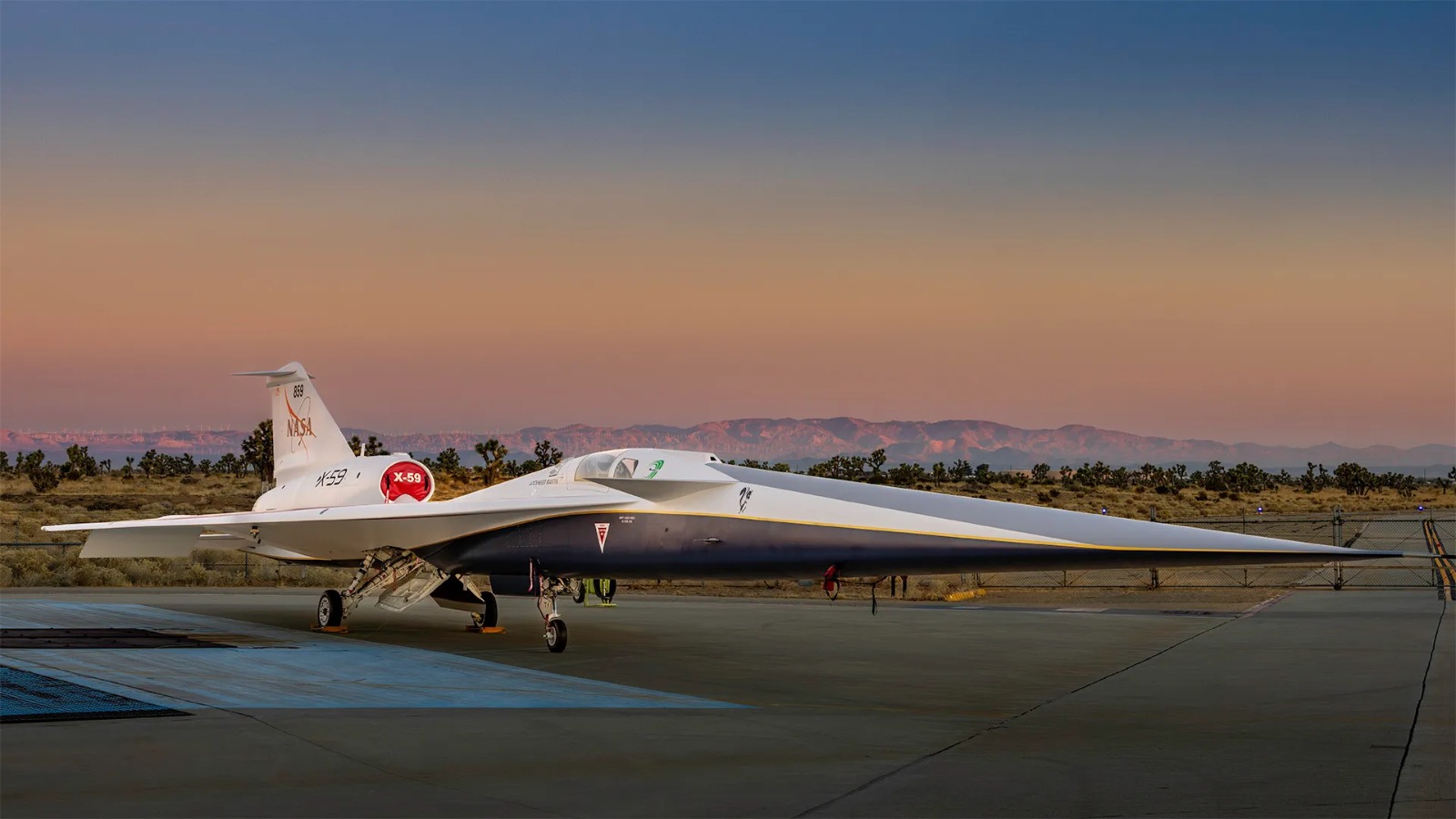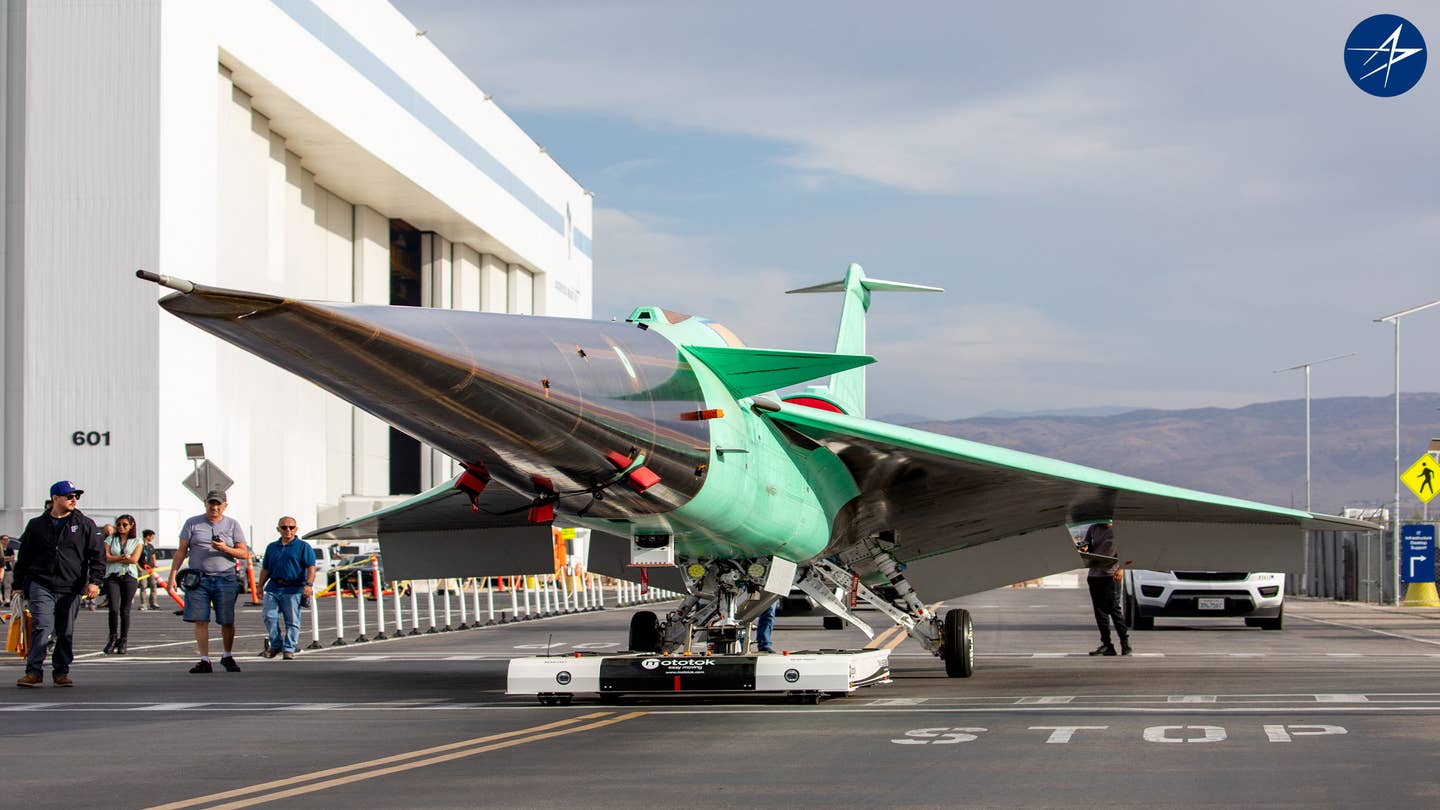In a monumental joint ceremony with Lockheed Martin Skunk Works, NASA rolled out the X-59, a one-of-a-kind Quiet Supersonic Technology experimental test aircraft (QueSST), on January 12, marking a significant leap forward in the pursuit of commercial supersonic flight.
The conclusion of the X-59’s construction marks the commencement of the countdown to its first flight. The unveiling ceremony, held in collaboration with Lockheed Martin Skunk Works in Palmdale, California, on Jan 12, showcased the X-59’s cutting-edge features.
Designed to reach speeds 1.4 times the speed of sound, equivalent to an impressive 925mph (1,488 km/h), this experimental aircraft represents a bold step in NASA’s mission to make supersonic travel a viable option for commercial purposes.
A thin, tapered nose, constituting almost one-third of the aircraft’s total length, has been engineered to disperse shock waves that typically create disruptive sonic booms around supersonic planes.
Engineers have taken additional measures to enhance the X-59’s supersonic capabilities. The cockpit has been positioned almost halfway down the length, and forward-facing windows, commonly found in traditional aircraft, have been omitted.
NASA Deputy Administrator Pam Melroy said, “This is a major accomplishment made possible only through the hard work and ingenuity from NASA and the entire X-59 team.”
“In just a few short years, we’ve gone from an ambitious concept to reality. NASA’s X-59 will help change how we travel, bringing us closer together in much less time,” Melroy said.

Addressing the challenge of limited visibility in the cockpit, the X-59 features an external vision system. Comprising high-resolution cameras feeding into an ultra-high-resolution monitor, this system is a technological marvel with the potential to influence future aircraft designs by eliminating forward-facing windows for engineering advantages.
Furthermore, the X-59’s top-mounted engine and smooth underside further demonstrate NASA’s commitment to minimizing the impact of sonic booms.
With its sleek design and innovative features, the X-59 represents a giant leap forward in aviation technology, offering a glimpse into the future of supersonic passenger travel.
X-59 Supersonic Test Jet
The X-59 project, originating in 2016, initially aimed for its first flight in 2020. However, due to various technical challenges, NASA’s QueSST team encountered delays, leading to the rescheduled maiden flight later in 2024.
Following integrated systems testing, engine runs, and taxi testing, the X-59 is set to undergo its first flight and subsequent tests at Plant 42 before relocating to NASA’s Armstrong Flight Research Center near Edwards Air Force Base in California.
The X-59 was showcased in front of cameras in August 2023, before the aircraft’s final painting process in the paint barn, where it received distinctive red, white, and blue paint job or livery.
NASA has said that the successful completion of initial flight testing will mark the conclusion of the first of the three phases of the QueSST project. The subsequent phase at Armstrong signifies a more intensive phase of work.
The second phase of the QueSST program would focus on validating the core design through flights in the supersonic test range over Edwards Air Force Base.

Moving into the third phase, the Community Response Study, the X-59 will undertake flights over various locations in the United States.
During this phase, feedback will be sought from individuals in the communities overflown, providing valuable insights into the public’s response to the aircraft’s noise characteristics.
The third phase is projected between 2025 and 2026, but the specific communities earmarked for this stage remain undisclosed. NASA has previously hinted at the potential involvement of four to six cities scattered across the nation in this comprehensive study.
For the past 50 years, the US has banned commercial supersonic travel over land due to concerns about explosive sonic booms.
At a launch event, Bob Pearce, NASA’s associate administrator for aeronautics research, highlighted the potential to design an aircraft producing a soft thump instead of a sonic boom.
The X-59’s role is to collect data on the acceptability of this sonic thump from the public, which will be provided to US and international regulatory authorities to lift the ban on supersonic flight over land.
The X-59’s distinctive design, shaping, and advanced technologies are ingeniously integrated to achieve this velocity with a significantly reduced noise signature.
- Contact the author at ashishmichel(at)gmail.com
- Follow EurAsian Times on Google News




